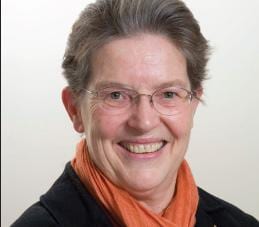The Women’s World conference is a gathering of academics, researchers, policymakers, community service providers and activists interested in exploring issues that hinder women’s equality.
More than 1,500 women from 91 countries will descend on Ottawa from July 3 to 7 for the 30th annual conference. This year’s theme is Inclusions, Exclusions and Seclusions: Living in a Globalized World.
The philosophy behind the conference is to mesh together three priorities: recognizing aboriginal women and indigenous women around the world, facilitating intergenerational dialogue, and making the event accessible to women with disabilities.
Caroline Andrew is director of the Centre of Governance and a professor in the School of Political Studies at the University of Ottawa. She is also the co-chair of this year’s forum.
“Not to say that these are the only intersections that we are preoccupied with, but we thought that these were really important ones and that they illustrated our preoccupation with trying to fully recognize the diversity of women,” she says.
The conference consists of presentations, workshops, forums and plenary discussions.
“Women’s World is offering a public space, a public forum for discussion and debate on the whole range of issues,” says Andrew. “We know there will be some issues on which there will be strong debate, and what we see ourselves as doing is offering a platform.”
According to Andrew, the guiding principle behind the plenaries was to get people from different sectors – frontline service providers, community advocates, policymakers and academics – to talk to each other.
“The plenaries are to bring people from very different sectors, from very different geographical places, from different language groups, respecting the idea of breaking barriers, breaking cycles, breaking ceilings,” she says.
The first day’s theme is Breaking Cycles, addresses the ways in which women are working to combat cycles of oppression in a globalized world. Day two’s theme, Breaking Ceilings, tackles strategies for breaking through economic, political and educational limitations placed on women’s careers.
Breaking Barriers, on day three, looks at how globalization divides women. The final day’s theme, Breaking Grounds, acknowledges the importance of information exchange between women around the world.
Andrew says it was a deliberate choice to end with Breaking Grounds.
“The idea was that we wanted the analysis of the impact of globalization, but we also wanted to highlight things that had been going on around the world on the ground,” she says. “We wanted the movement of the conference to end on a positive “keep going” mood.”
Andrew is conscious of the fact that the conference is being held in Canada and that 50 percent of the participants are from different parts of the country. She feels that for many of the participants who work at the community level the conference offers the opportunity to meet people they would never meet otherwise.
Bearing that in mind, what Andrew herself wants out of the conference is simple.
“My dream of a totally successful conference is that an enormous number of people come away with two or three emails [addresses],” says Andrew. “The connection that people here are realizing that they are part of a whole bunch of movements going on around the world and that there are mutual things that we can learn from one another – I think that would be really powerful.”

 Why you can trust Xtra
Why you can trust Xtra


